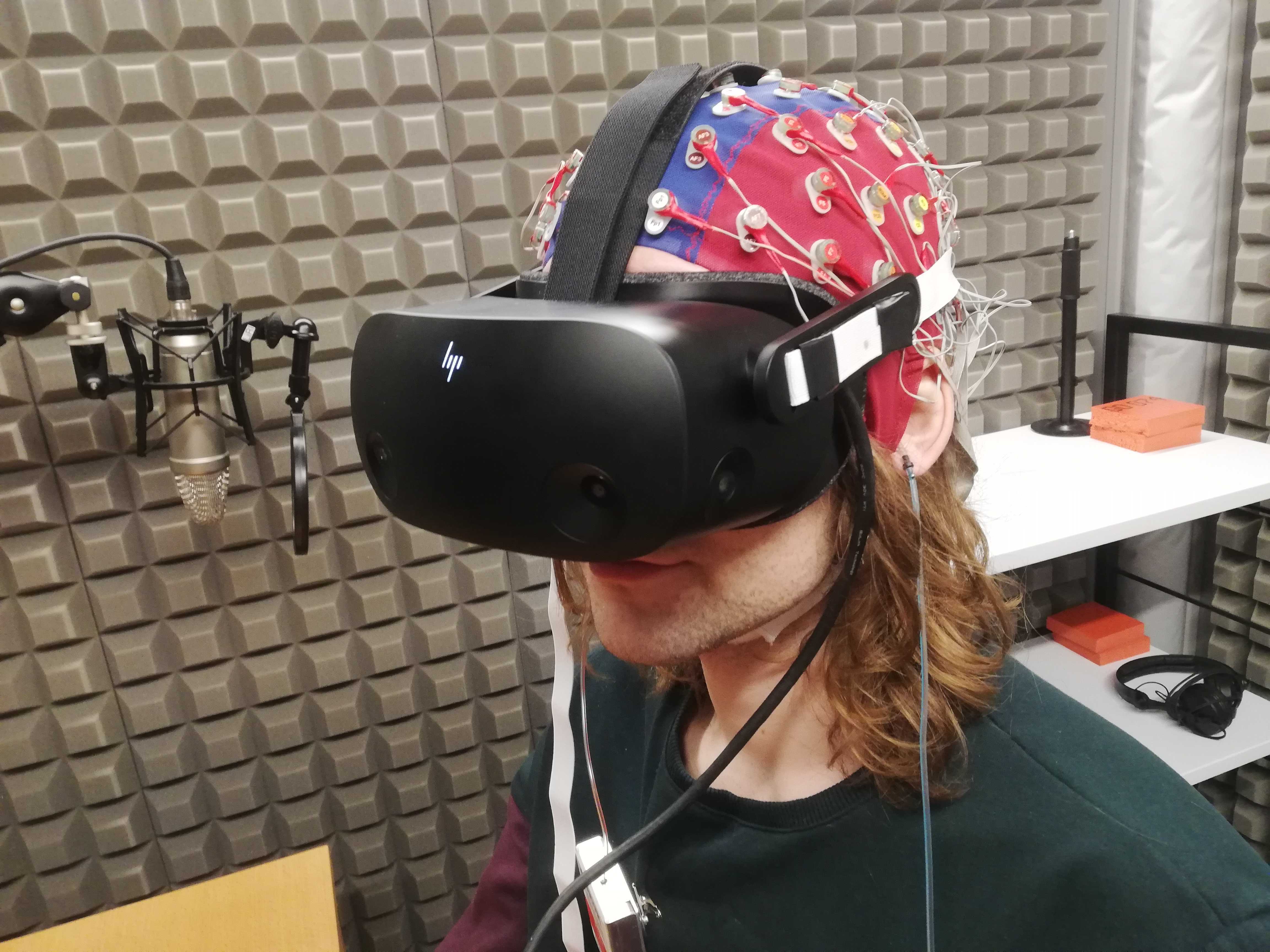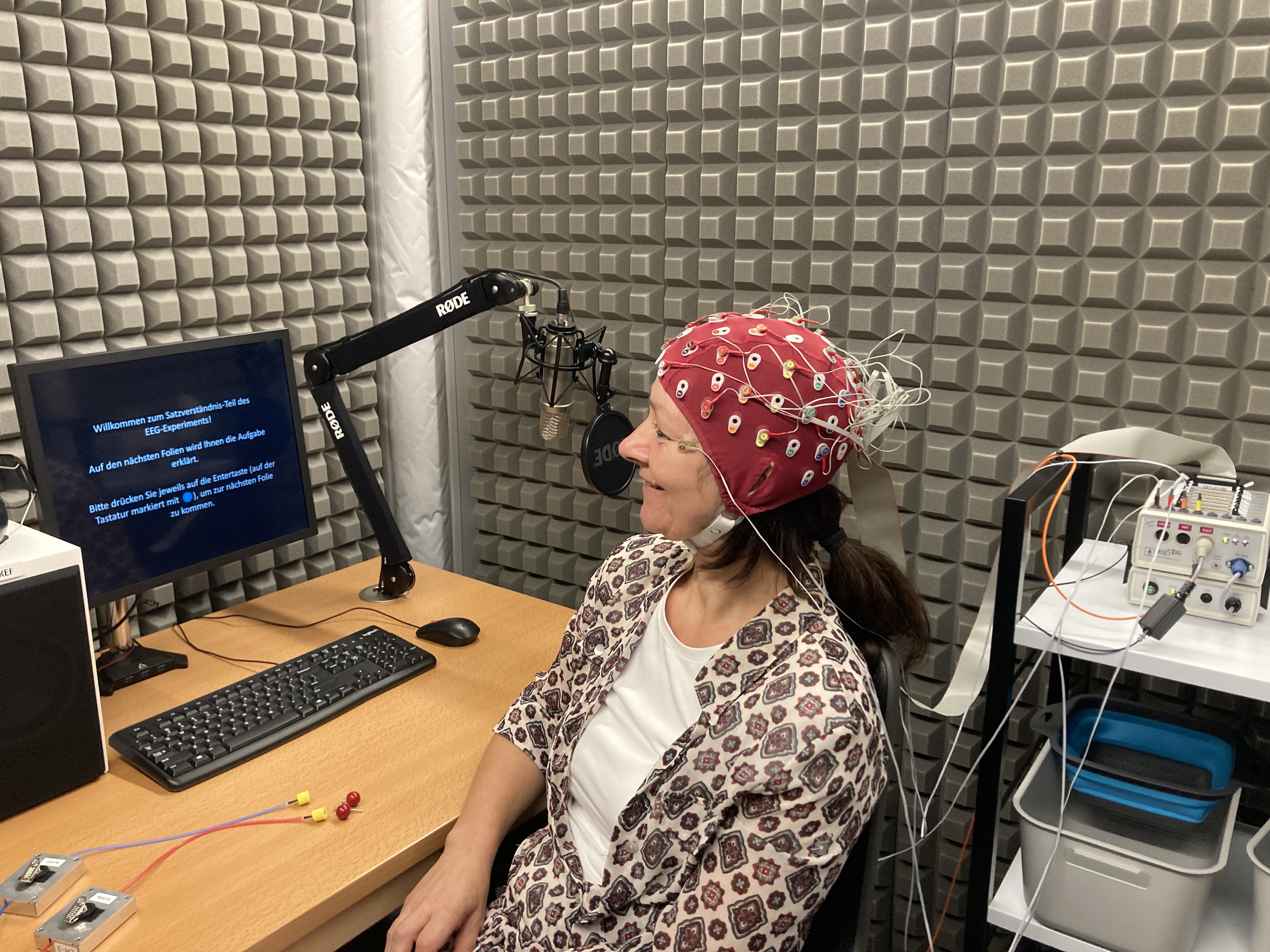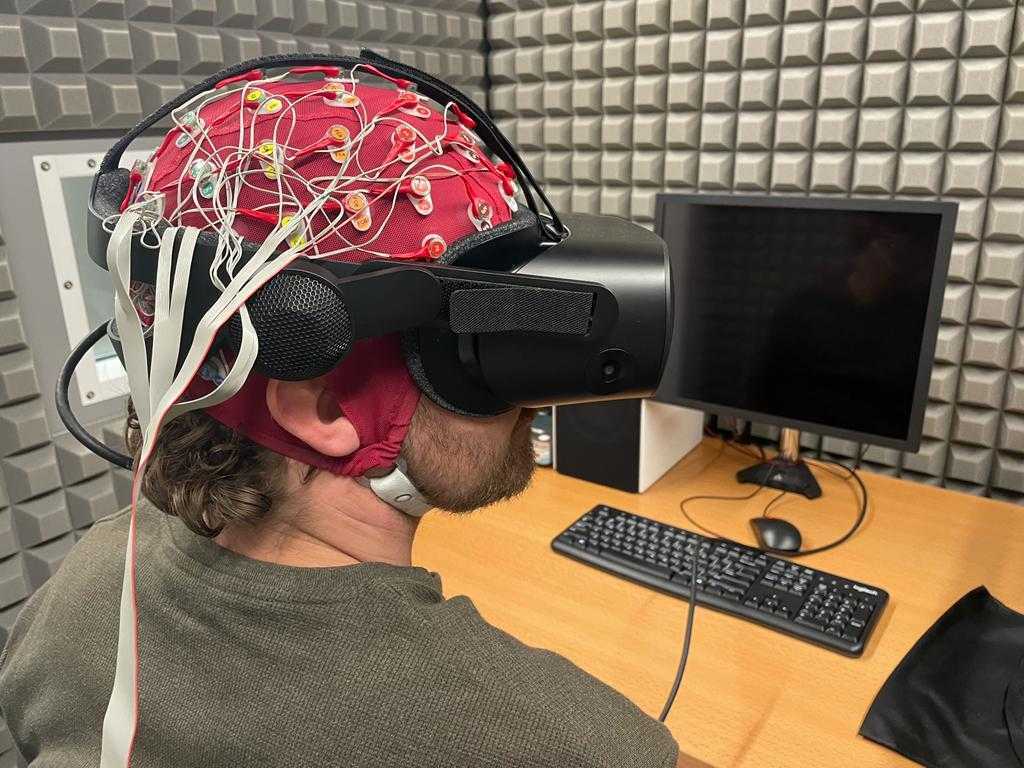Research Interest
Our research can be divided into three areas:
- Basic research: Based on controlled experiments in our laboratories (e.g., in the hyperscanning lab, the acoustics lab, or the EEG lab), we investigate how the human brain processes, interprets, and responds to speech and other communicative information (e.g., speech acoustics, voice, eye movements, mouth movements). We also investigate how the brain and heart adapt to such input and synchronize with each other and with the environment during interactive tasks.
- Clinical research: In our clinical studies, we investigate changes in the neural processing of language in individuals suffering from mental disorders or neurological diseases. We are involved in the development of (neuro)biomarkers to reliably detect such changes at an early stage and participate in the development of new interventions for hearing and speech pathologies and other disorders that impair communication.
- Technology development: We develop digital applications and neurophysiological tools to improve the diagnosis and treatment of hearing, speech, and communication disorders (e.g., mobile phone training apps, virtual reality applications, neurofeedback protocols and brain-computer interfaces).
Our research group works with multiple methods, such as:
- Electroencephalography (EEG)
- functional and structural magnetic resonance tomography (MRI)
- Hyperscanning (evaluation of inter-brain or inter-heart synchrony)
- Neurofeedback
- Eye movement tracking
- Acoustic stimulation
- Speech and voice processing, NLP
- Multimodal methods such as EEG-eye tracking, EEG-virtual reality


